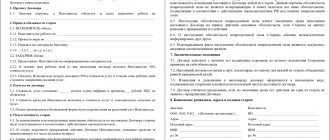The Social Insurance Fund reimburses expenses to policyholders in regions where there is not yet a pilot project for the payment of benefits to individuals directly by the Social Insurance Fund. To receive compensation, business entities must prepare a package of documents. Many questions arise about what documents are needed to reimburse expenses to the Social Insurance Fund in 2020. The exact list of documents will depend on the type of payment, but in any case you need to prepare an application, a calculation certificate and an explanation of expenses. Employers who have spent more money on paying benefits to staff than insurance premiums have been charged will be able to receive compensation. If the contributions are sufficient, an offset is made against future payments.
List of documents
To return funds spent on sick leave payments, you must provide the following documents to the territorial office of the fund:
- a correctly executed sick leave certificate for the employee, indicating the validity of the money spent;
- a calculation that indicates how many contributions were made to the budget and how much money was transferred to the employees of the enterprise;
- a written request for the allocation of funds to reimburse sick leave.
Sick leave for the benefit recipient
In addition to the mandatory documents listed above, officials may require additional papers:
- a document that can prove that the person receiving the benefit is actually employed by the policyholder;
- a certificate of the employee’s income from the previous employer for the last two years (certificate in form 182n);
- confirmation of a certain duration of insurance coverage.
Package contents
Regardless of what type of payment we are talking about, policyholders submit the following documents to the Fund :
- Application in the form from the FSS letter dated December 7, 2016 No. 02-09-11/04-03-27029.
- 4-FSS, if the right to benefits arose after January 1, 2017.
- Certificate of calculation and explanation of expenses.
To this list is added an impressive set of documents, the composition of which depends on the specific benefit . To summarize, these are documents that confirm:
- that there is an employment relationship between the policyholder and the insured person;
- that there is an insured event;
- that the amount to be paid is calculated correctly (for sick leave and child benefits).
Participants in the pilot project for direct payments send to the Fund not packages of documents, but registers in the established form. Insured persons receive benefits directly from the Social Insurance Fund.
Calculation
Previously, employers reported using Form 4-FSS. In 2021, the report must be completed on the calculation certificate form.
Since recently the tax service has been accepting insurance contributions, FSS employees no longer have information about how much money a particular employer has transferred to the budget. The policyholder reflects this data in the calculation certificate. FSS employees can request information from the tax service and verify the accuracy of the information specified in the certificate.
According to the order of the Ministry of Labor of the Russian Federation No585H dated October 28, 2016, the calculation document must contain the following information:
- the exact amount of debt on contributions at the beginning of the period;
- the exact amount of debt at the end of the period;
- the amount of costs accepted for calculation;
- how much insurance premiums are charged;
- how much additional insurance premiums have been charged;
- compensation received from the insurance fund;
- how much is spent on social security.
Example of filling out a calculation certificate
Written appeal
The application form for reimbursement of expenses for hospital and other social benefits is not approved by law. But the fund, using an internal letter, clarified what the application form should look like and how to fill it out correctly.
At the top of the document there must be data from the FSS body to which the application is being submitted:
- name of the branch;
- last name, first name, patronymic of the head of this department.
Below is information about the employer who acts as the insurer of his employees:
- Business name;
- legal address of the organization;
- TIN;
- checkpoint;
- insurance number.
The following are attached to the application:
- certificate of settlement;
- a document proving the validity of sick leave expenses.
Example of a refund application
How to submit a contribution report to the tax service
Before submitting documents for compensation, you must provide a tax report on contributions. The filling out procedure is regulated by Appendix No. 2 to the Order of the Tax Service dated October tenth two thousand and sixteen No. MMB-7-11/551. This document consists of a title page and three sections. The calculation is filled out strictly in black, blue or purple ink. Letters must be capitalized only. If the document is filled out electronically, use Courier New font, size 16-18. Then the completed sheet must be printed.
Payments must be submitted by the thirtieth day of the month following the reporting month. For example, for nine months of 2021, the document must be received by the tax service no later than October 30, 2021.
If the company has more than twenty-five employees, the report should be submitted strictly electronically. For small companies, you can fill out a paper version of the document.
Report form
There are two ways to submit a report to the tax office:
- the head of the organization or his authorized representative personally visits the Federal Tax Service;
- A registered letter with a list of attachments is sent to the address of the tax service.
Tax authorities transmit to the Social Insurance Fund information about how many contributions have been accrued and paid for social security within the following time frames:
- no later than 5 days from the date of submission of the electronic report;
- no later than 10 days from the date of submission of the report on paper.
Shipping methods
There are two main methods for sending a list of documents to the Social Insurance Fund (Table 2).
| Shipping method | Description |
| Electronic | The use of this method implies the presence of special communication channels and the use of an electronic digital signature. Otherwise, sending is not possible. |
| Physical | Sent either by mail or courier. It is mandatory to have a sealed envelope with an inventory of the contents and other means of protecting physical documents. It is also recommended to use registered mail, which is much more reliable, since the sender will be immediately notified that the addressee has received the letter. |
Compliance with all established conditions is also mandatory and does not constitute a benefit if the report does not reach the fund on time.
When will expenses be reimbursed?
To ensure that the costs indicated in the application are justified, fund employees conduct a reconciliation. If fund employees have any doubts, they have the right to request additional documents. Control can also be carried out by visiting officials to the enterprise.
As a result of the reconciliation, the fund may decide:
- pay money;
- refuse to issue compensation for social benefits due to unreasonable costs.
According to Article 4.6 F3 No. 255 dated December twenty-nine two thousand and six, money for the return of funds spent on sick leave will be transferred to the company’s account within ten days from the date of filing a written appeal.
Article 4.6. The procedure for financial support for the expenses of policyholders for the payment of insurance coverage from the budget of the Social Insurance Fund of the Russian Federation
Credit for the amount of insurance premiums
The easiest way to reimburse the cost of sick leave is to subtract social costs from the amount that the employer transfers monthly to the social insurance fund.
The employer can compensate for his sick leave expenses through contributions to the insurance fund.
An enterprise has the right to deduct from contributions not only sick leave, but also other social benefits:
- in connection with the death of a close relative of an employee;
- in honor of the birth of a newborn;
- funds paid to the employee in connection with her pregnancy and childbirth;
- caring for a minor under one and a half years old;
- a pregnant woman who registered with a medical institution in the early stages of pregnancy (up to twelve weeks).
How the Social Insurance Fund reduces the amounts to be offset and reimbursed
An employer cannot always count on reimbursement of benefits from the Social Insurance Fund. The Fund often does not recognize amounts paid as benefits. Most of the litigation concerns controversial (according to the fund) child benefits. Let's talk about them using examples from judicial practice.
Example 1
The company paid child care benefits to grandmothers who worked part-time. At the same time, grandmothers lived separately from their children, and mothers did not work and, in fact, they were the ones who looked after their children.
The FSS did not recognize the amounts paid as benefits, but the court supported it (resolution of the Arbitration Court of the Central District dated August 26, 2019 No. F10-2645/2019 in case No. A54-5101/2018).
Example 2
The employer paid care allowance to the child's father. The employee worked part-time. Moreover, the child’s mother did not work anywhere during this period.
The FSS and the judges concluded that the reduction in time by 1 hour did not allow the child’s father to fully provide care. As a result, the amounts paid are not benefits, but are recognized as additional remuneration at the expense of the employer (resolution of the Arbitration Court of the Ural District dated June 6, 2019 in case No. A76-29523/2018).
Example 3
The subject of the dispute between the Social Insurance Fund and the employer was the child care benefit, which was paid to a mother working on a reduced working day. However, this time the court supported the employer (resolution of the Arbitration Court of the Ural District dated July 5, 2019 No. F09-3862/19 in case No. A76-39929/2018).
The arguments for the judges were the following circumstances: the recipient of the benefit was a single mother, and there was no evidence that anyone else (other than herself) was looking after the child. The actual time worked during the period of receiving benefits amounted to 69%, loss of earnings - 14%.
Example 4
An employee who receives child care benefits and works short hours was sent on a business trip for 4 days. The FSS considered that during the business trip the woman could not care for the child, that is, she lost the right to benefits.
However, judges of all instances, including the Supreme Court of the Russian Federation, did not agree with this approach. In their opinion, in such circumstances (during a short-term business trip) it cannot be considered that parental care has been terminated. We can talk about lack of care when a business trip lasts more than a month (determination of the RF Armed Forces dated August 2, 2019 No. 309-ES19-12197).
From the examples given, we can conclude that the payment of child care benefits in conditions where the recipient works part-time almost always causes complaints from controllers from the Social Insurance Fund. In court, employers manage to fight off some of the claims due to the fact that the circumstances of each case are considered separately, taking into account all the nuances.
If the cost of social benefits is greater than the contribution
The reduction of contributions by the amount of sick leave within the reporting period (1st, 2nd, 3rd quarter) occurs on the basis of the Tax Code of the Russian Federation, paragraph 2, article 431. Federal Tax Service employees will automatically transfer the excess to the account of the next month.
But, if excess expenses for benefits were revealed at the end of the reporting period (1st, 2nd, 3rd quarter, year), one should be guided by the ninth paragraph of the same article of the Tax Code of the Russian Federation.
In such a situation, there are two solutions:
- contact the Social Insurance Fund for the missing amount;
- leave the excess amount towards future installments.
Who makes it up
Responsibility for compiling a complete list of documents for the Social Insurance Fund falls on the management of the company and the immediate head of a specific department. Such a hierarchy allows you to improve the structure between the Social Insurance Fund and the company, as well as make error-free payments. So, the management collects all the documents and draws up an inventory, using the help of the office, signs and sends it to the Social Insurance Fund.
How to register
If Social Security costs exceed your contribution, the excess can be withdrawn in cash or used to pay future contributions. To do this, submit to the Social Insurance Fund the same papers as to receive the full amount:
- reference calculation;
- sick leave;
- a written request to offset the excess against the payment of future contributions or to issue the excess amount in cash.
Example of a written request
The set of papers listed above can be submitted without waiting for the end of the quarter.
When considering a written request for compensation, FSS employees request information from the tax service from the reports that the applicant previously submitted. Representatives of the fund can also carry out an on-site inspection and verify the legality of the funds spent. During the inspection, the FSS may request additional documents from you about the expenses you incurred. As a result, the fund issues either a positive or negative response.
If, based on the results of the audit, fund employees do not find any violations, the Social Insurance Fund informs the tax office about confirmation of expenses. The fiscal service offsets the excess against the payment of future contributions or transfers money to the account you specified. If FSS employees discover that you have paid sick leave unreasonably, a report will be drawn up. This document is provided to you for your review. You can challenge it. Otherwise, the fund makes a decision to reject the request. You will be notified of this decision within three working days. A copy of this document will also be sent to the tax office. Thus, an arrear of contributions will arise and the Federal Tax Service will issue you a demand for payment.
If the amount accepted for offset is less than the insurance premium, the difference must be paid within the time limits established by law.
Time limit established for the reimbursement procedure
The promptness of the return of expenses to the enterprise depends on the absence of errors in the submitted documents. If there are no complaints from the fund’s specialists, the funds will be returned within the allotted time frame.
| Conditions for the procedure | Return period |
| The basis for return is the submitted package of documents | 10 days from the date of submission of documents |
| Documents are subject to a desk check | 3 months from the date of submission of the application as part of the package of documents |
| Refunds are accompanied by an on-site inspection | 2 months from the date of the inspection decision |
The FSS has the right to conduct a desk audit to confirm the legality of the insured's expenses. As part of the audit, the FSS may require a number of documents relating to expenses incurred. The documents stated in the request must be submitted within 10 days from the date of receipt of the request. If this is not possible, the employer must give a written refusal. For each missing document a fine of 200 rubles is imposed.
Based on the results of the control exercise, the FSS sends a decision to confirm expenses or refuse reimbursement. After receiving a positive decision, the Federal Tax Service Inspectorate issues an order to the Federal Treasury branch. After 3 days, the amount is transferred to the bank account of the organization or individual entrepreneur.
Is it possible to submit documents to the tax office and not to the Social Insurance Fund?
The employer has the right to submit a written request for reimbursement of sick leave not only to the Social Insurance Fund, but also to the territorial office of the tax inspectorate. Information exchange and document flow are well established between services.
In this case, inspection staff notify the fund of the received application. In addition, tax authorities transmit the information necessary for decision-making from a unified reporting form. The Social Insurance Fund, in turn, checks the validity of expenses for sick leave and other social benefits. In controversial situations, a joint inspection by the tax office and the Social Insurance Fund can be carried out with a visit to the policyholder.
If the policyholder has committed an offense, tax authorities have the right to make a decision on whether to hold the person liable. This is also reported to the fund.
How to submit an application for reimbursement of expenses for the Social Insurance Fund in 2020
There are no particular difficulties in filling out the form. In the header of the application, the company indicates the name of the department of the Social Insurance Fund and the name of the head of the department. In the main text you must put:
- registration number of the organization or individual entrepreneur;
- subordination code;
- INN and checkpoint of the company.
Next, enter the amount that the policyholder wants to return - that is, the difference that arose due to the excess of expenses over accruals. Below are the bank account details to which the Fund will transfer funds if the decision is positive.
The application is signed by the head and chief accountant of the company. The contact telephone numbers of officials and the date of completion are indicated. If there is a seal, the application is certified by its imprint.
The representative of the policyholder, in addition to the signature and transcript of the surname, enters in specially designated lines the details of documents confirming identity (for example, passports) and powers (usually a power of attorney).
If the policyholder decides to apply for compensation, reimbursement of expenses to the Social Insurance Fund can be found at the end of this article.
Documents to confirm expenses for other social benefits
If you want to receive reimbursement of expenses not only for sick leave, but also for other types of social benefits, you must provide supporting documents.
Table. Types of social benefits, the costs of which are subject to reimbursement
| Type of benefit | Documents to be provided |
| One-time payments to women expecting a baby for up to twelve weeks | Certificate from a medical institution in which the future parent is registered |
| Maternity or one-time payments for pregnancy and childbirth | Sick leave |
| One-time payment upon birth of a baby | Certificate and certificates proving the fact of the birth of the baby; document confirming non-receipt of the same benefit from the place of employment of the second holder of parental rights |
| Payments to persons caring for a minor citizen during the same leave | Certificate and certificates proving the fact of the birth of the baby; document confirming non-receipt of the same benefit from the place of employment of the second holder of parental rights |
| For burial | Certificate proving the death of a relative of an employee |
Birth benefit
When reimbursing funds for the payment of a lump sum benefit for the birth of a child, the following must be presented:
- application for benefits;
- a child’s birth certificate issued by the civil registry office;
- a copy of the child's birth certificate;
- a certificate stating that the benefit was not assigned from the place of work (service) of the other parent, or the social protection body at the place of residence, if the father (mother, both parents) of the child does not work (does not serve) or is studying full-time in professional educational organizations, educational organizations of higher education, educational organizations of additional professional education and scientific organizations, and the other parent of the child works (serves);
- certificate of divorce, if the marriage between the parents is dissolved;
- a copy of the child’s birth certificate issued by a consular office of the Russian Federation outside the territory of the Russian Federation - if the child is born on the territory of a foreign state.
In cases where the registration of the birth of a child is carried out by the competent authority of a foreign state:
- a document and its copy confirming the fact of birth and registration of a child, issued and certified with an “apostille” stamp by the competent authority of a foreign state, with a translation into Russian certified in accordance with the procedure established by the legislation of the Russian Federation - at the birth of a child on the territory of a foreign state party to the Convention abolishing the requirement of legalization foreign official instruments, concluded at The Hague on October 5, 1961;
- a document and its copy confirming the fact of birth and registration of a child, issued by a competent authority of a foreign state, translated into Russian and legalized by a consular office of the Russian Federation outside the territory of the Russian Federation - at the birth of a child on the territory of a foreign state that is not a party to the above Convention;
- a document and its copy confirming the fact of birth and registration of a child, issued by the competent authority of a foreign state, translated into Russian and affixed with an official seal - at the birth of a child on the territory of a foreign state that is a party to the Convention on Legal Assistance and Legal Relations in Civil, Family and Criminal Matters cases concluded in the city of Minsk on January 22, 1993;
- an extract from the decision to establish guardianship over the child (a copy of the court decision on adoption that has entered into legal force, a copy of the agreement on the transfer of the child (children) to a foster family) - for the person replacing the parents (guardian, adoptive parent, adoptive parent);
- a document confirming the cohabitation of a child with one of the parents on the territory of the Russian Federation, issued by an organization authorized to issue it - if the marriage between the child’s parents is dissolved.







